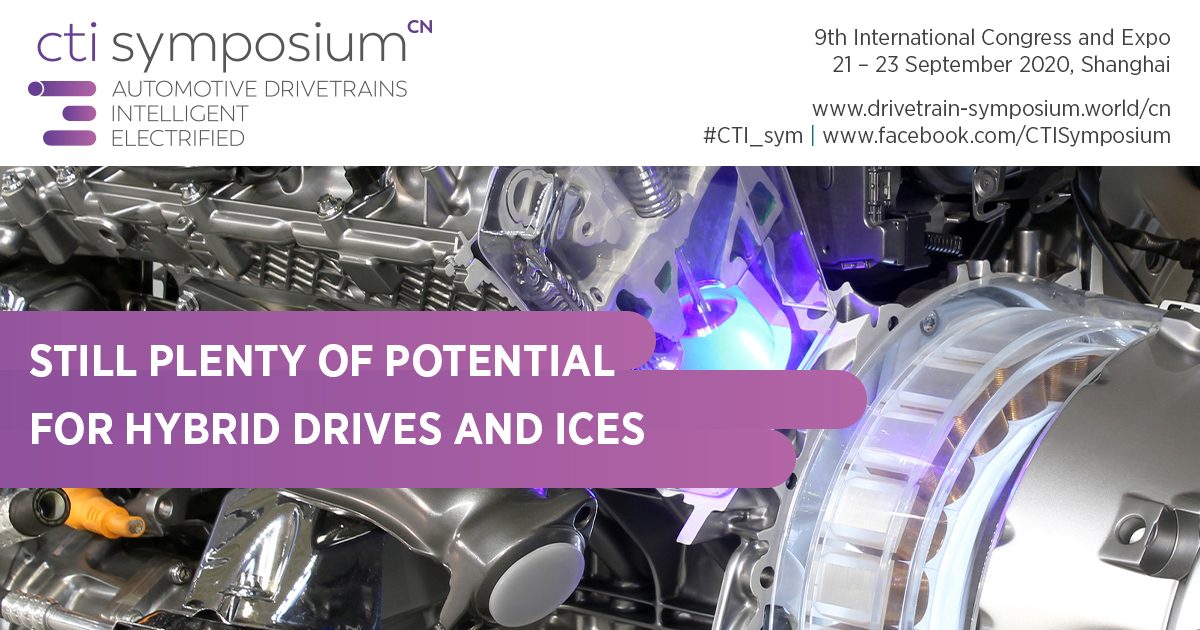
“Don’t be fooled by some media” said Shemin Zhang, speaking of the future of internal combustion engines. Although China was tightening CO2 legislation in a similar way to Europe, Japan and the USA, internal combustion engines still make sense – at least in hybrid systems. By 2025, ICEs would still account for over 80 % of the market, but efficiency requirements would keep rising and would depend on the degree of hybridization. In conventional applications, Zhang expects to see more complex technology with more supercharging, direct injection, Miller/Atkinson and exhaust gas recirculation. He said Japanese OEMs in particular would continue to optimize their hybrid-optimized engines. Powertrain electrification, especially in series hybrids, leads to an ICE simplification. On the one hand, developers are striving for optimal thermal efficiency across a wide operating range; on the other, they are concentrating on a narrow sweet spot, particularly in hybrid applications with higher levels of electrification. As typical approaches, the speaker cited Toyota’s power-split hybrid, Honda’s I-MMD series-parallel architecture and a series hybrid Nissan ePower application. By contrast, he said the focus for German OEMs is P2 parallel hybrid. In future, Dongfeng is planning a common engine platform to cover conventional and hybrid applications. Development areas include lower friction, integrated cylinder-head cooling, optimized combustion chamber shapes, Atkinson Cycle, variable intake and exhaust valve timing, external EGR, and variable turbine geometry for turbochargers. Zhang was confident that CO2 can be reduced to about 90 g/km. He named two contributing factors: hybridisation, and the possibility of increasing ICE efficiency from today’s 40 % to 45-50 % in 2030.
Dr Shemin Zhang, Director of Powertrain Development, Dongfeng Motor Company, China
